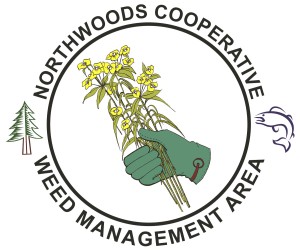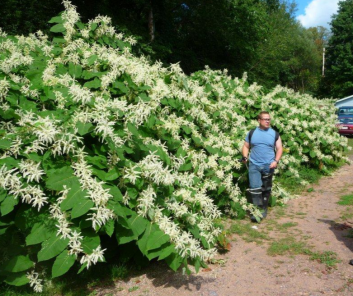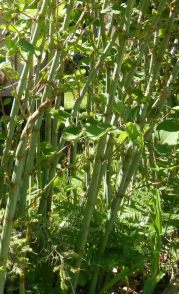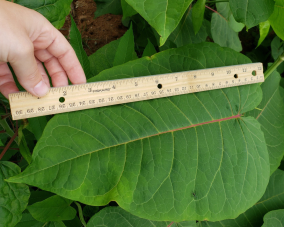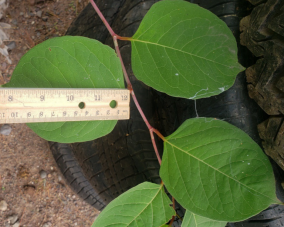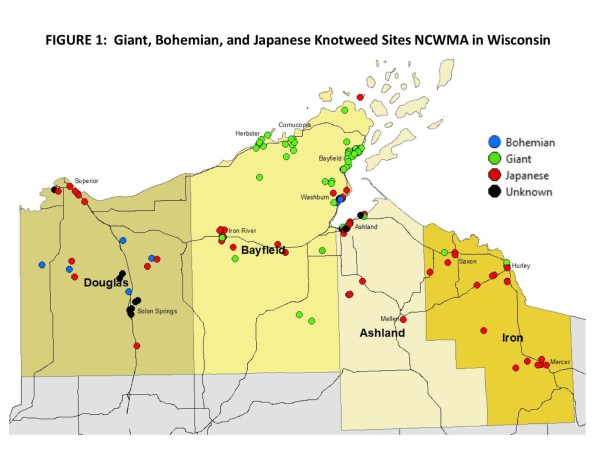Knotweeds
Three species of invasive knotweeds (giant, Bohemian and Japanese knotweeds) occur in the NCWMA region. They are listed by the NR-40 invasive species rule in Wisconsin, so it is illegal to transport, transfer, or introduce knotweed plants.
Knotweed infestations often began from ornamental plantings in yards years ago. Because they get tall and difficult to control, people often cut them and dump them somewhere else which can start new infestations. Because of this, there are infestations along roads and in community composts. They do not spread as quickly as other invasive species by seeds. However, they have extensive roots, so they are difficult to control or eradicate without using herbicide. The NCWMA works with landowners to treat knotweed. Learn about the work the NCWMA has done treating knotweeds in the region.
Check out the presentation that Ramona Shackleford, the NCMWA Coordinator, made at the Upper Midwest Invasive Species Conference (UMISC) in 2024.
Identifying knotweeds
The photos above show infestations of giant knotweed (Reynoutria sachalinensis). All three species of knotweeds have numerous clusters of small white flowers in that bloom in late summer similar to the photo on the left. All species also have hollow bamboo-like stems like the photo on the right.
All three species have simple, alternate leaves. Giant knotweed has large leaves (6-12 inches) with heart-shaped base (left-below), while Japanese knotweed has smaller leaves (4-6 inches) that do not have the heart-shaped base (right-below). Bohemian knotweed is a hybrid of the two species with variable sized-leaves and shapes of both species.

